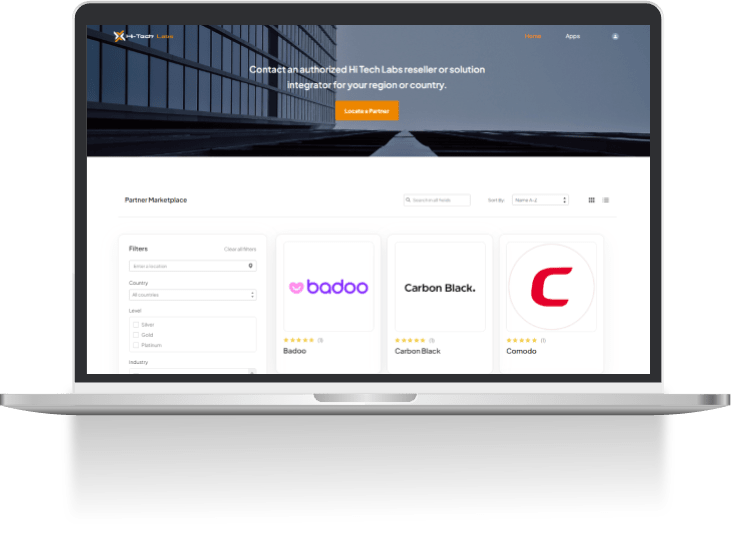Salesforce Co-Branding Partnership App
HELP YOUR PARTNERS REACH A WIDER AUDIENCE THROUGH CO-BRANDING MARKETINGEmpower Partners. Expand Horizons.

AC Partner Co-Branding Features








See How AC Partner Co-Branding Serves Different Industries
Contact us for
any questions
If you want to have a conversation about anything related to Experience Cloud or see demos of our components and learn how to maximize the value of community to your business.
Recommended Products



Resources
The latest Salesforce Summer ’23 update is here, and it’s packed with fantastic features that will revolutionize how sales teams work! One of the highlights of this release is the game-changing PRM for Slack app. Read this article to learn more….
Read our article to learn how the AC Partner Marketplace, a robust solution for partner portals in Salesforce Experience Cloud, can help you enhance your partner relations management and drive lead generation for your business….
How to drive partner success with Salesforce PRM? In this webinar recap, we spill the beans and show the real-life example of how a partner portal can be beneficial for an organization….
FAQ
What license is needed to use the app?
- Users with co-branding capabilities will need a Partner License
Do you use native objects for partner branding?
- The app uses both custom and standard objects. For example, partner information is stored on native Account Brand records.
Which software is needed for PDF template building?
- You may use any software which supports the form filling feature. We suggest Adobe Acrobat Pro.
What is co-branding in marketing and why is it important for businesses using Salesforce Experience Cloud?
Co-branding strategy involves two or more brands collaborating to create a product or service that showcases both of their brand names and brand image logos. This approach provides a unique opportunity for both brands to use their strengths and benefit from the increased exposure and recognition that comes with working together.
In the context of Salesforce branding and Experience Cloud, businesses can take advantage of various tools and features to establish co-branding relationships and marketing strategy with their partners. Additionally, there are third-party apps available, such as AC Partner Co-Branding, that can further streamline the co-branded product creation process within Salesforce and enhance the overall experience for all parties involved.
Branding with Salesforce Experience Cloud: best practices.
- Consistency is key. Ensure that branding elements are consistent across all Experience Cloud pages.
- Personalization. Use Salesforce’s personalization features to tailor branding to specific customer segments.
- Branding customization. Customize pages with brand color schemes and logos for consistency.
- Test and refine: Continuously test and refine branding for effectiveness, using analytics to track user behavior and engagement.
The best co-branding products for Experience Cloud site
There is only one third-party app available for co-branding with Salesforce Experience Cloud – AC Partner Co-Branding. This app offers a range of features and functionality for businesses looking to establish co-branded relationships with their partners, including customizable branding, asset management, and customizable templates to help businesses enhance their branding within the Salesforce environment and create a more engaging, cohesive experience for their customers.
If you’re looking for solutions for establishing an efficient Salesforce partner relationship management system, then AC Partner Marketplace is your best bet. Use thing app on your Experience Cloud site to easily find and engage with partners, enhance lead generation in Salesforce, and grow your business in a secure and customizable environment.
Organize co-branded events with your partners using a comprehensive Salesforce event management app AC Events Enterprise.
Give me a co-branding example with AC Partner Co-Branding solution.
Let’s say your company, ABC Manufacturing, has partnered with another company, XYZ Distribution, to jointly promote a new line of products. With AC Partner Co-Branding, you can create co-branded marketing materials such as product flyers, email templates, and landing pages within Salesforce Experience Cloud.
You can use pre-built templates that are already designed with your company’s branding elements and customize them with XYZ Distribution’s logo, color scheme, and other corporate details. This allows both companies to be represented in the marketing materials and increases the exposure and recognition for both brands.
With AC Partner Co-Branding, you can organize all the co-branded assets in separate folders for easy access and management. This way, both companies can quickly find and use the materials they need to promote the new line of products, helping to strengthen the co-branding partnership and ultimately drive sales.
How to co-brand with AC Partner Co-Branding?
- Upload your company logo and other relevant marketing assets to the app.
- Create co-branded marketing materials by customizing the pre-built templates with your branding elements and partner’s details.
- Share the co-branded materials with your partners through the Salesforce Experience Cloud.
- Allow partners to manage and update their assets and details through the PRM Portal, ensuring that all materials are up-to-date and consistent.
- Use the co-branded materials to promote your business and partnership across various channels, such as email campaigns, social media, and events.
What is the difference between co-marketing and co-branding?
Co-marketing involves two or more brands collaborating on promotional activities or campaigns to achieve mutual marketing goals while co-branding involves two or more brands combining their identities and creating a new product, service, or campaign that leverages the strengths of each brand. In co-marketing, brands typically join forces to create marketing materials, run joint advertising campaigns, or collaborate on events while in co-branding, brands collaborate to create a new offering that incorporates elements of both brands, such as logos, names, or brand values.
What are the benefits of co-branding?
Co-branded products or campaigns can capture the interest and attention of both existing customers and new consumers by offering unique value propositions that combine the strengths of both brands. This can lead to increased customer loyalty and engagement, as consumers are attracted to the novelty and added value provided by the collaboration. This can be a strategic approach for brands to achieve various marketing objectives, including expanding market reach, enhancing brand’s credibility, driving customer engagement, and ultimately driving revenue growth.




